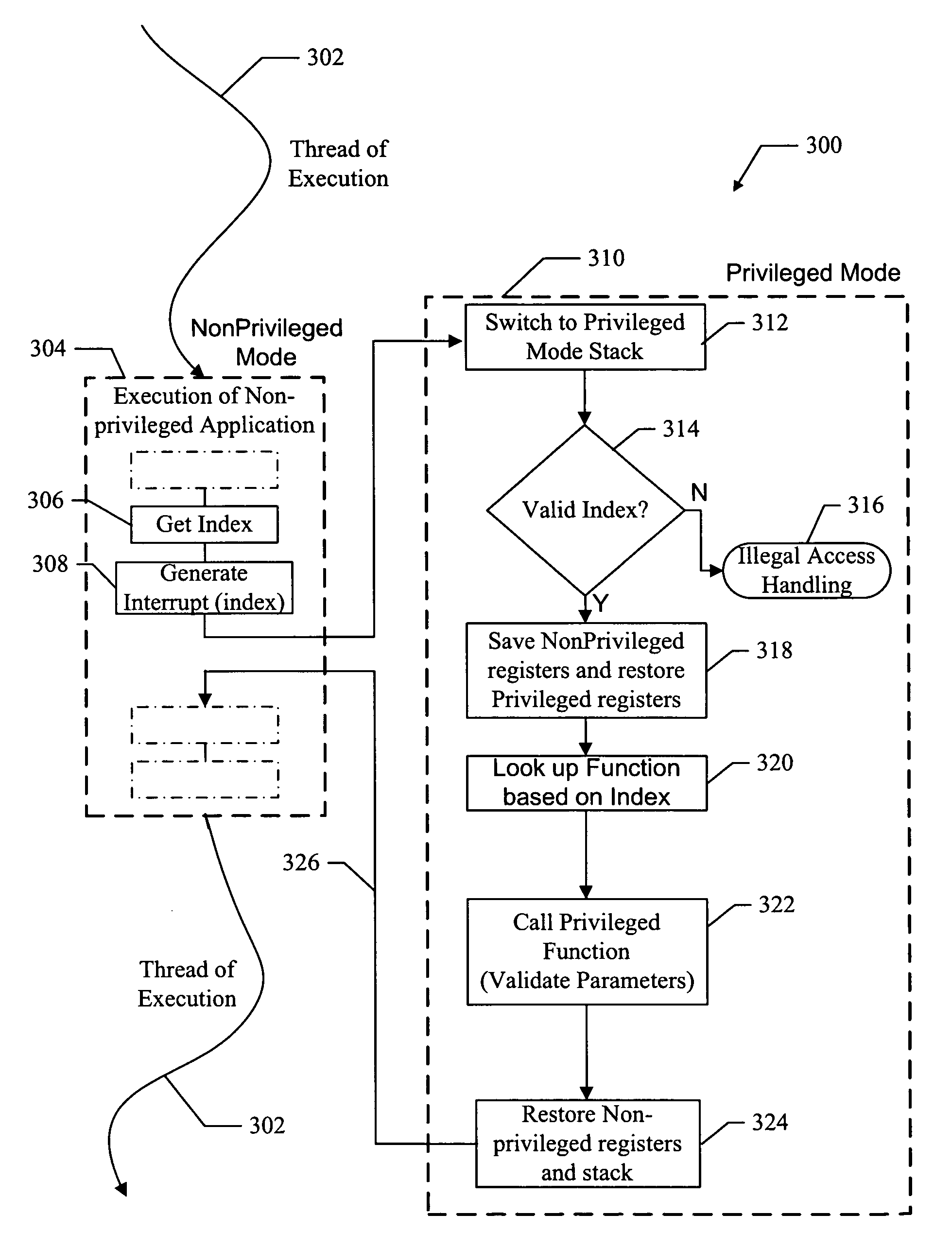System for providing transitions between operating modes of a device
a technology of transition mode and operating mode, applied in the direction of multi-programming arrangement, specific access rights, instruments, etc., can solve the problems of additional system delay, system scheduling and operation complexity, additional system complexity, etc., and achieve the effect of avoiding task creation, scheduling, and dispatcher latency
- Summary
- Abstract
- Description
- Claims
- Application Information
AI Technical Summary
Benefits of technology
Problems solved by technology
Method used
Image
Examples
Embodiment Construction
[0021]The following detailed description describes a transition system that provides transitions between operating modes of a device. For example, the system operates to provide fast and efficient transitions between non-privileged and privileged operating modes of a device, whereby a non-privileged application is able to perform privileged functions without a new task being generated. As a result, the system avoids the overhead of new task creation, scheduling and dispatcher latency.
[0022]In one or more embodiments, the transition system interacts with a runtime environment executing on the device that is used to simplify operation of the device, such as by providing generalized calls for device specific resources. One such runtime environment is the Binary Runtime Environment for Wireless™ (BREW™) software platform developed by QUALCOMM, Inc., of San Diego, Calif. The following description describes a device executing a runtime environment, such as the BREW software platform. Howe...
PUM
 Login to View More
Login to View More Abstract
Description
Claims
Application Information
 Login to View More
Login to View More - R&D
- Intellectual Property
- Life Sciences
- Materials
- Tech Scout
- Unparalleled Data Quality
- Higher Quality Content
- 60% Fewer Hallucinations
Browse by: Latest US Patents, China's latest patents, Technical Efficacy Thesaurus, Application Domain, Technology Topic, Popular Technical Reports.
© 2025 PatSnap. All rights reserved.Legal|Privacy policy|Modern Slavery Act Transparency Statement|Sitemap|About US| Contact US: help@patsnap.com



